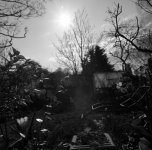Austerby
Well-known
I've just bought a secondhand lens from a dealer. It's an old lens and I noticed some imperfections in my examination of the lens which look like pretty normal wear and tear, but they are there. The dealer has allowed me a one month trial, during which I can return the lens for a full refund if I am not satisfied.
What tests should I carry out to see if I should keep the lens or return it for the refund?
In particular, I'm interested if there are any special techniques or subjects I should consider rather than just normal photographic subjects. For example, should I be using wider or narrower apertures; faster or slower shutter speeds; brick walls or trees etc.
(for those who may be curious, it's a 50mm Distagon for a Hasselblad - the C T* model for which I've paid £250, which seems to be at par with internet auction site values. I think the shutter is OK, it's more the optics I'm interested in testing).
What tests should I carry out to see if I should keep the lens or return it for the refund?
In particular, I'm interested if there are any special techniques or subjects I should consider rather than just normal photographic subjects. For example, should I be using wider or narrower apertures; faster or slower shutter speeds; brick walls or trees etc.
(for those who may be curious, it's a 50mm Distagon for a Hasselblad - the C T* model for which I've paid £250, which seems to be at par with internet auction site values. I think the shutter is OK, it's more the optics I'm interested in testing).


